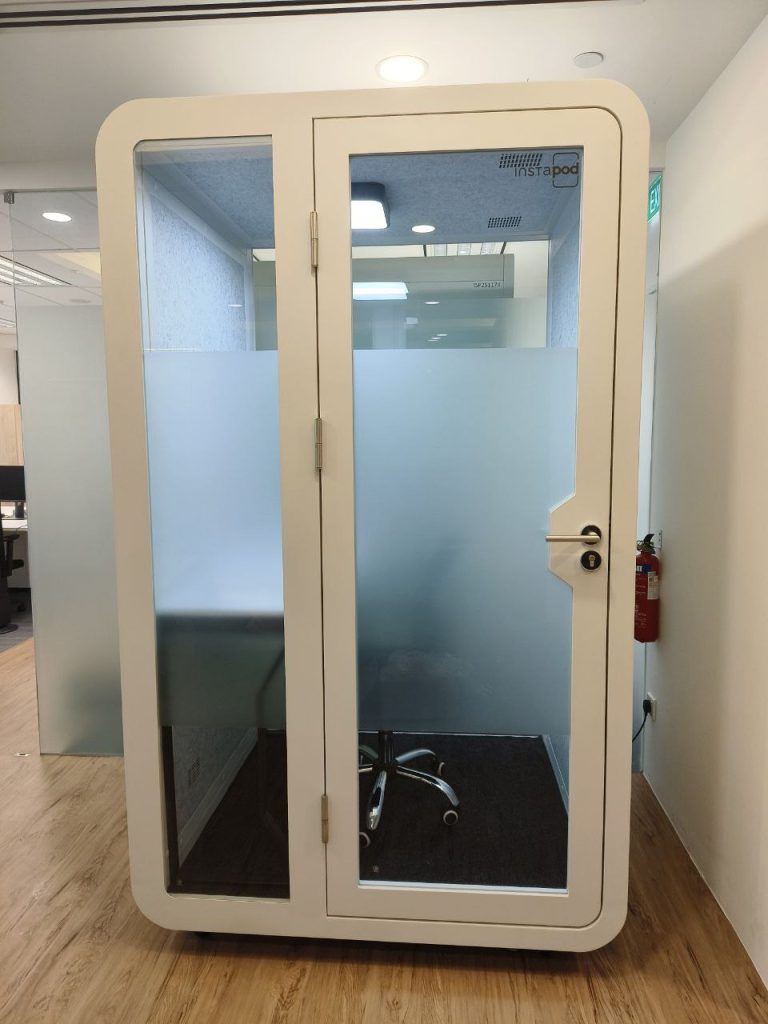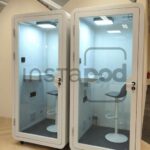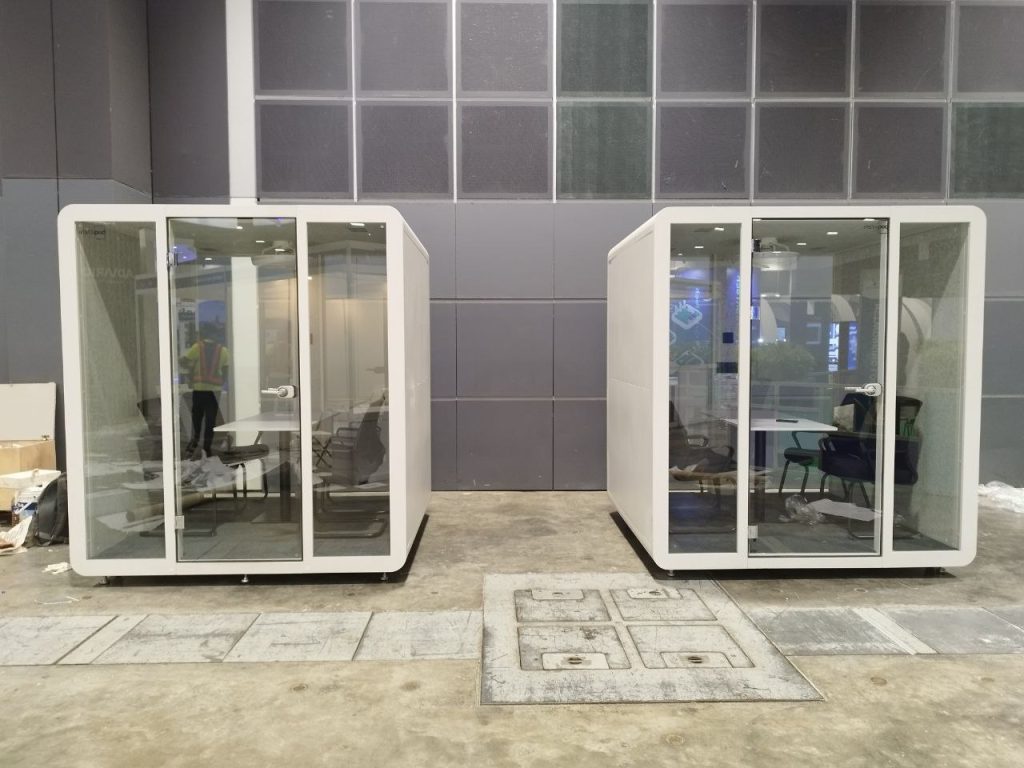No pods added to your quote request yet. Add some now for a free quote!
Creating a Focused Work Environment with Office Pods

In today’s fast-paced, open-concept office spaces, creating a focused work environment has become increasingly challenging. Distractions are everywhere, from the constant hum of conversations to the ringing of phones and the lure of social media. In response, many companies are turning to innovative solutions to help their employees stay productive and focused. One such solution gaining popularity is the use of office pods.
What are Office Pods?
Office pods are self-contained, compact spaces designed to provide privacy and quiet in bustling work environments. These modular units can be installed within larger office areas, offering employees a retreat where they can concentrate on tasks requiring deep focus, take confidential calls, or engage in meetings without distractions.
Office pods come in various shapes and sizes, ranging from small one-person booths to larger meeting rooms that can accommodate several people. They are typically equipped with soundproofing materials, ergonomic furniture, and essential office technology like power outlets and lighting, making them versatile spaces for various work needs.
The Rise of Office Pods
The concept of office pods has emerged in response to the growing popularity of open-plan offices, which, while promoting collaboration and communication, often fall short in providing the quiet and privacy that many employees need to do their best work. According to a survey conducted by the International Facility Management Association (IFMA), over 70% of workers in open-plan offices experience increased noise levels, leading to decreased productivity.
The need for focused work environments became even more apparent during the COVID-19 pandemic, when many employees experienced the benefits of working from home. As companies transition back to the office or adopt hybrid work models, there is a growing demand for flexible spaces that offer the best of both worlds – the collaborative energy of the office and the focused, distraction-free environment of working from home. Office pods meet this demand by offering a solution that is both flexible and adaptable to different work styles.
Benefits of Office Pods
- Enhanced Productivity: Office pods are designed to minimize distractions, allowing employees to concentrate on their work without interruptions. This can lead to increased productivity, as employees can complete tasks more efficiently when they are not constantly disrupted.
- Improved Privacy: In open-plan offices, finding a private space to have a confidential conversation or make a phone call can be difficult. Office pods provide a private environment where employees can conduct sensitive business without being overheard.
- Flexibility and Mobility: Office pods are modular and can be easily relocated or reconfigured to suit the changing needs of the workplace. This makes them a flexible solution for companies that require adaptable workspaces.
- Acoustic Control: One of the key features of office pods is their soundproofing capabilities. They are often constructed with materials that absorb sound, reducing noise pollution in the surrounding area and creating a quiet space for focused work.
- Employee Well-being: Providing employees with a quiet space where they can recharge and focus can contribute to their overall well-being. Reducing stress and providing an environment conducive to concentration can lead to higher job satisfaction and lower turnover rates.
- Collaboration and Innovation: While office pods are often associated with individual work, they can also be used for small group meetings or brainstorming sessions. The privacy and quiet of the pod can foster more creative and focused discussions, leading to better collaboration and innovation.
Integrating Office Pods into Your Workspace
When considering the integration of office pods into your workspace, it’s important to assess the specific needs of your employees and the layout of your office. Here are some tips for successful integration:
- Identify High-Need Areas: Place office pods in areas of the office where noise levels are high or where employees frequently need privacy. Common areas such as near open workstations, close to conference rooms, or in large communal spaces are ideal.
- Choose the Right Size: Depending on the needs of your team, select office pods that accommodate the number of users and the type of work they will be doing. For example, a single-person pod might be ideal for focused work, while a larger pod could be used for team meetings.
- Consider Design and Comfort: Ensure that the office pods are designed with ergonomics in mind. Comfortable seating, adequate lighting, and proper ventilation are essential to create a space where employees can work comfortably for extended periods.
- Promote Pod Usage: Encourage employees to use office pods by making them easily accessible and incorporating them into the office culture. Highlight the benefits of using these spaces for focused work or private meetings.
Conclusion
Office pods offer a practical and innovative solution for creating a focused work environment in today’s dynamic workplaces. By providing employees with spaces that prioritize concentration, privacy, and comfort, companies can enhance productivity, support employee well-being, and foster a more effective and innovative work culture. As the workplace continues to evolve, office pods are poised to play a significant role in shaping the future of work, offering flexibility and focus in equal measure.
Check these out too!
-
 Conference Room Pods: A Sound Investment for Focused TeamsJuly 30, 2025/0 Comments
Conference Room Pods: A Sound Investment for Focused TeamsJuly 30, 2025/0 Comments -

-


